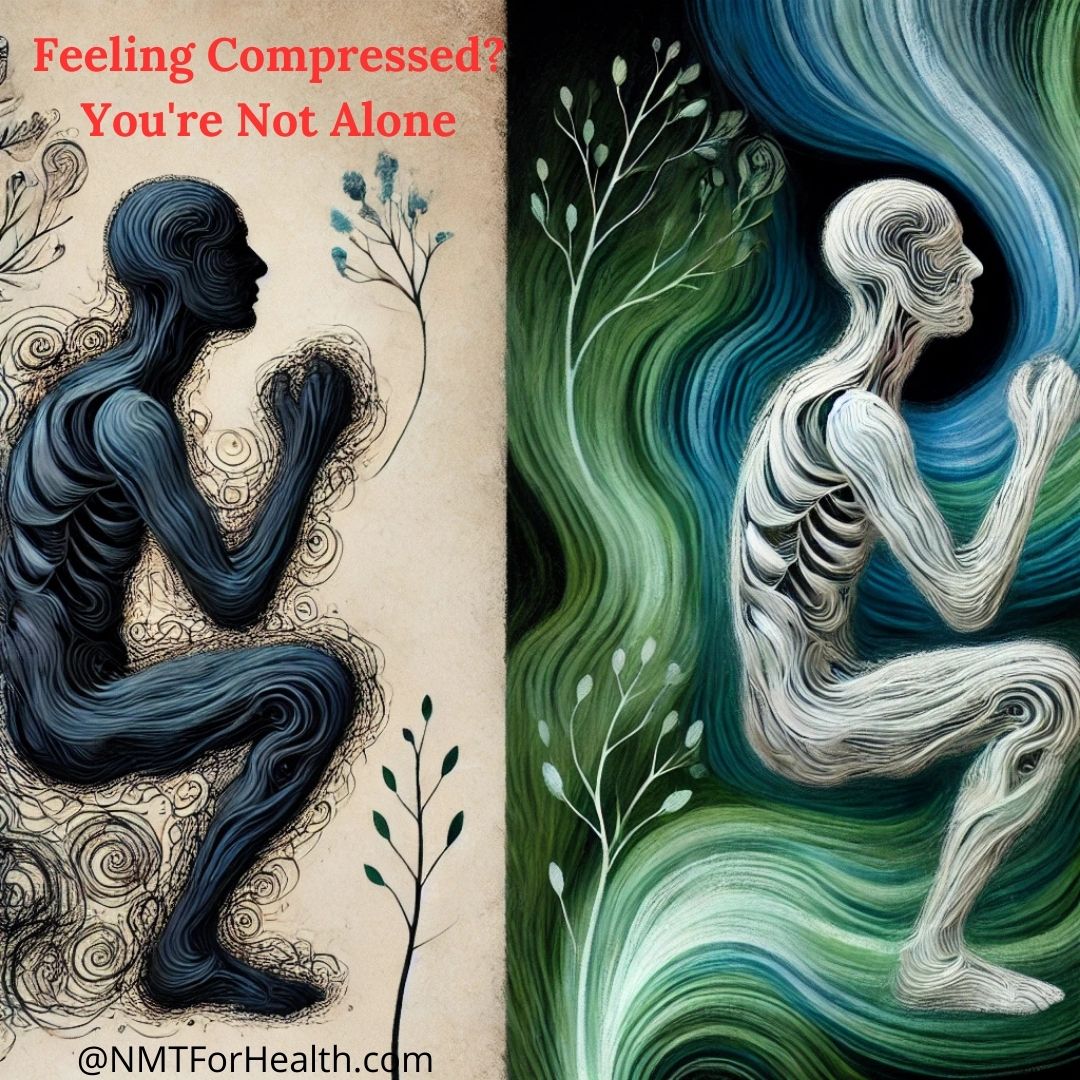Decompress Your Spine and Restore Core Balance
Have you ever felt like your body is holding its breath?
Not just in your chest—but in your spine, hips, and even your jaw.
That heavy, compressed feeling isn’t your imagination. It’s often the result of life stress and chronic tension patterns settling deep into the body. Over time, you start to move less. Or you move only in one direction. Without realizing it, your breathing becomes shallow, and your body adapts in ways meant to protect you—but those patterns can end up holding you back.
The good news is this: You can decompress.
It starts by learning how to move in all three planes of motion while breathing with control and awareness.
By rebuilding this connection, you restore balance in your core and move from a place of neutral, rather than compensation.
When this happens, you develop confidence in your body again—something many of us lose after years of chronic stress and repetitive strain.
Client Story: Healing the Weight of Grief and Disappointment
One of my clients came to me carrying a weight that went beyond physical pain.
She had experienced a painful personal loss that triggered chronic tension patterns throughout her body. Sleep was elusive. Her thoughts were constantly racing. There was an overwhelming sense of urgency to “do something”—whether to help someone else or to simply hold herself together.
On top of this, she had recently immigrated from another country, working tirelessly to create a better life. Yet with that came unmet expectations, disappointment, and a deep sense of fatigue. Her body adapted to all this by clenching, bracing, and holding itself together with tension.
By the time we met, her low back was tied up in knots. Even so, she was motivated to heal and ready to begin.
Where We Began: Discovery Session Insights
During our Discovery Session, we uncovered something critical to her healing.
She had uneven core control. Moving to the left required her right side to overcompensate, resulting in strain on her spine, knees, quadratus lumborum (QL), low back, neck, and jaw.
Her jaw was clenching in an unconscious effort to create a sense of stability. Meanwhile, her spine was overworking to move her body because her core wasn’t providing the necessary support.
As a starting point, we focused on lymphatic drainage. This helped improve circulation in her low back and reduced congestion. Gradually, as the tension eased, her breathing became less restricted.
Not surprisingly, her brain fog began to lift as well.
(When your core isn’t moving naturally in all three planes, your nervous system stays stuck in survival mode, and clarity becomes hard to find.)
Continuing Care: Unwinding Compensation and Building Confidence
Her next step was to begin Continuing Care Sessions. In these sessions, we worked to address her jaw clenching, which had become an unconscious habit. Her nervous system was relying on her jaw to stabilize her body because other areas weren’t fully accessible.
As we progressed, we turned our focus toward her hip mobility. We also addressed the immobility in her left foot and ankle, which were contributing to instability in her knee.
Furthermore, her glutes and hamstrings were inhibited, creating an imbalance where her right side was doing more than its share.
With consistent care, we worked on restoring this balance—teaching her how to move in all planes of motion, breathe with control, and stabilize from her core rather than relying on compensatory strategies.
Why This Matters: Breath, Movement, and Lymphatic Flow
This client’s journey is a powerful reminder that grief, stress, and survival mode often leave their imprint on the body. When we stop moving with awareness and breathing deeply, we may unconsciously develop patterns of compression that restrict movement and disrupt balance.
However, there is a way to recondition your body to trust movement again.
By decompressing your spine and restoring core balance, you can move from neutral, with control and confidence.
That’s exactly what she’s doing—one layer at a time.
I’m there to guide and support her through the process, but it’s her commitment that makes the difference.
If you’d like to better understand why breathing and movement in all three planes are essential for balance and healing, take a look at this resource on the body’s three planes of motion.
You may also find it helpful to explore how breathing impacts your nervous system and stress, and how the lymphatic system supports circulation and recovery.
Ready to Explore Your Own Movement Patterns?
If you’ve been feeling compressed, stuck, or disconnected from your body, you’re not alone. There’s a way forward.
My Discovery Sessions offer a starting point to uncover the patterns that may be holding you back—whether from stress, injury, or life transitions—and to help you find space to move freely again.

